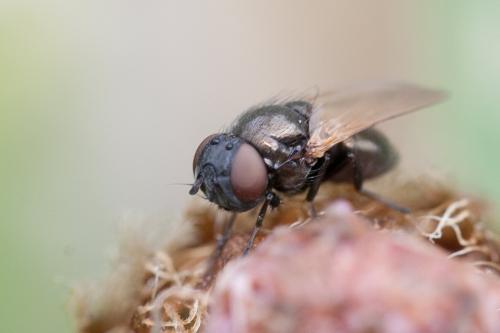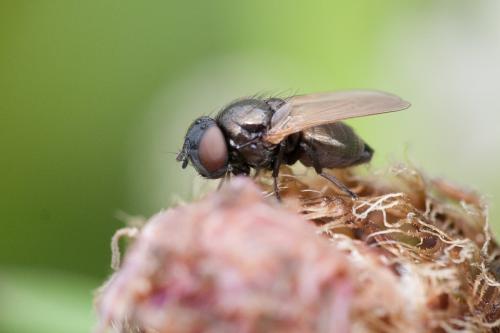Thread subject: Diptera.info :: Lonchaeidae [was Shining black fly in south-west France]
Posted by pierred on 19-07-2019 13:58
#1
Hello,
(Click on the picture to get a better resolution. Click again on the picture to come back.)

Pierre Duhem : France : Saint-André-d'Allas : 24200 : 29/07/2008
Altitude : 270 m - Taille : 5-6 mm
Réf. : 235812

Pierre Duhem : France : Saint-André-d'Allas : 24200 : 29/07/2008
Altitude : 270 m - Taille : 5-6 mm
Réf. : 235813
evdb pointed me to the Lauxaniidae, but I don't find such short yellowish wings.
More, The ptilinal suture is still rather open.
And what do you think about
four ocelli ?
Thanks in advance for any help.
Edited by pierred on 21-07-2019 08:20
Posted by John Carr on 19-07-2019 14:08
#2
I don't see dorsal preapical bristles on tibiae and I do see something black sticking out of the rear end. I think Tephritoidea.
Posted by pierred on 19-07-2019 14:29
#3
John,
Thanks. I had overseen the ovipositor.
Posted by Paul Beuk on 19-07-2019 16:03
#4
Lonchaeidae, thinking of
Earomyia
Posted by pierred on 19-07-2019 16:55
#5
Thanks, Paul.
I didn't know this genus.
Posted by pierred on 21-07-2019 08:28
#6
According to FE and INPN, there is a single species in France,
Earomyia bazini (Séguy, 1932).
Posted by Jan Maca on 21-07-2019 10:48
#7
I think this is a Dasiops: lunula seems to be with setae, vibrissa present (although visible only on one side). And certainly there are more Earomyia species in France, just they are unrecorded.
Edited by Jan Maca on 21-07-2019 10:54
Posted by pierred on 21-07-2019 10:56
#8
Thanks Jan.
Posted by Paul Beuk on 21-07-2019 17:55
#9
pierred wrote:
According to FE and INPN, there is a single species in France, Earomyia bazini (Séguy, 1932).
Apart from the fact that Jan could be right with his
Dasiops (
Earomyia and
Dasiops are both relatively scarce here and I did not bother to dig up my key, sorry), do not put too much trust on the distribution of those genera in France as given by Faune Europaea.
Posted by pierred on 21-07-2019 19:58
#10
OK, Paul.
As always, nowadays, Fauna Europaea is only taken as an information source, not as a proof.
Posted by Iain MacGowan on 21-07-2019 21:46
#11
It looks like a female
Dasiops at this size most probably a female D. latifrons. The French Lonchaeidae were reviewed by Withers & MacGowan (2014) and the most up to date and accurate distribution maps can be found at Lonchaeidae online.
Dasiops latifrons map is at
http://lonchaeidae.myspecies.info/category/lonchaeidae-classification-and-species-info/lonchaeidae/dasiopiniae/dasiops/dasiops-latifro
Posted by pierred on 22-07-2019 06:43
#12
Thanks a lot, Iain.

